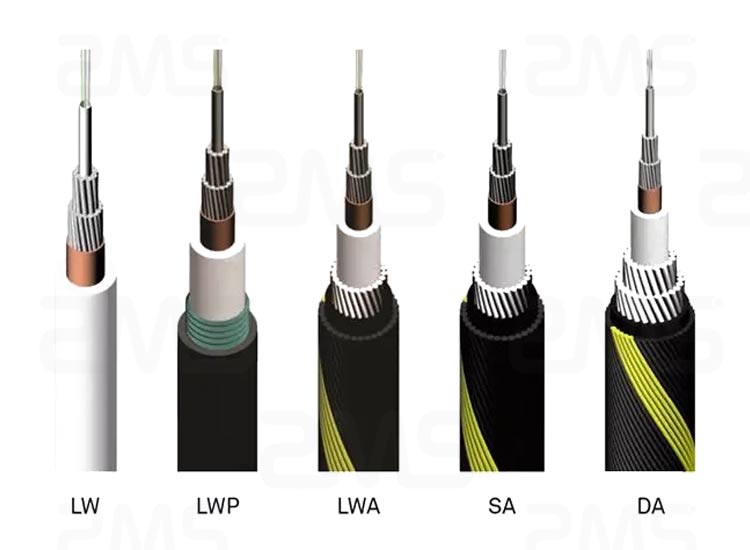Subsea Fiber Optic Cable
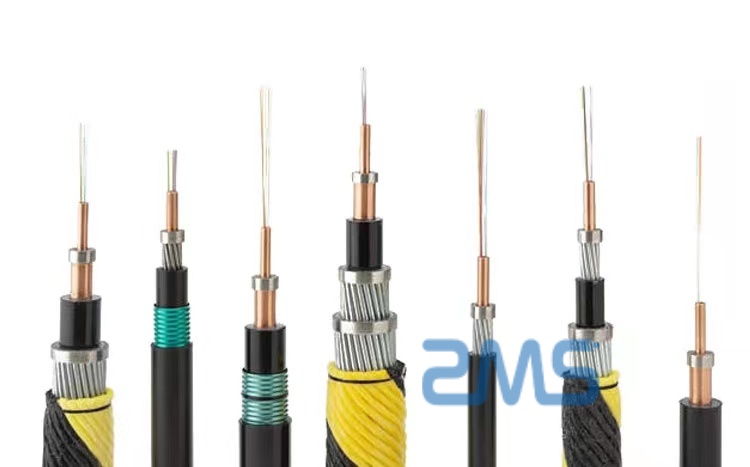
Subsea Fiber Optic Cables are electrical wires wrapped in insulating material and laid on the ocean floor. ZMS subsea fiber optic insulation solutions are available with finishing steps, coloring, and splicing options and can be developed in lengths, with a large market of customers worldwide. Helping submarine fiber cable manufacturers reduce costs and footprint. Our finishing steps provide the reliability and performance required in harsh subsea environments.
Common Models: GYTA333, heavy armored, environmentally friendly
Subsea Optical Fiber Cable Products
The basic structure of submarine fiber optic cable is polyethylene layer, polyester resin or asphalt layer, steel strand layer, aluminum waterproof layer, polycarbonate layer, copper or aluminum tube, paraffin, alkane layer, fiber bundle, etc.
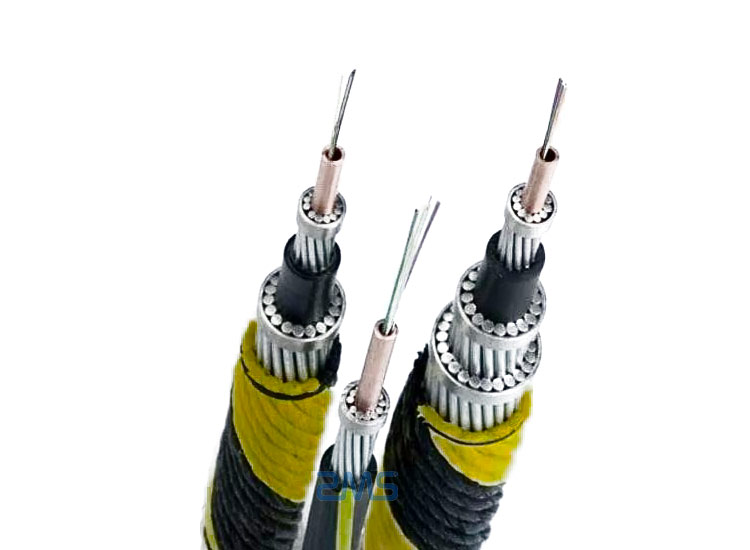
Underwater Armored Fiber Optic Cable Series
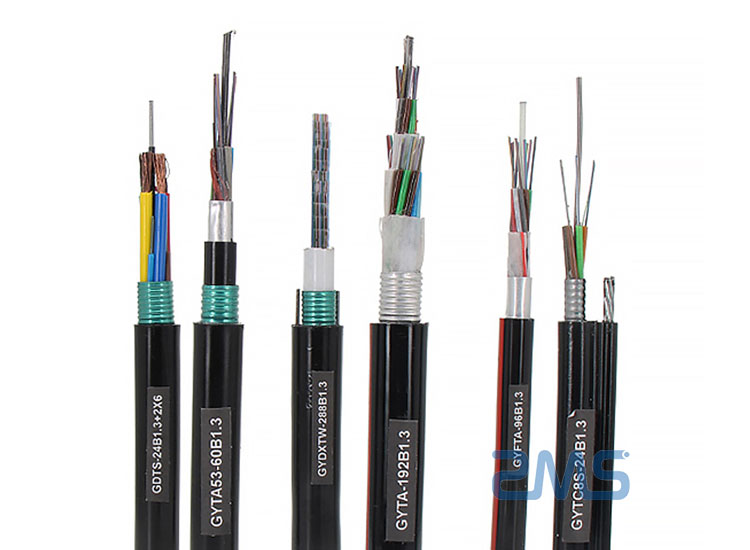
Lightweight Submarine Fiber Optic Cable Series
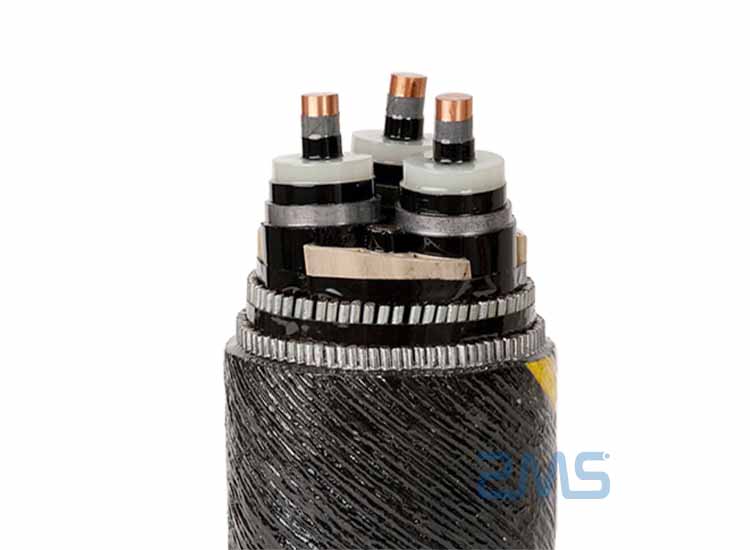
Medium / High Voltage Submarine Fiber Optic Cable Series
Repeatered Undersea Fiber Optic Cables (ROC-SA)
Repeatered submarine fiber optic cable communication systems contain one or more repeaters and are suitable for ultra-long distance, high-speed trans-oceanic communication systems.
Execution Standard: GB∕T 18480, GJB 4489, IEC 60794, ITU-T G.976
Scope of Use: laid in the ocean, rivers, for intercontinental, mainland, and islands, islands, and inter-island communication and data information transmission, with large transmission capacity, long continuous length, and other characteristics. It is suitable for ultra-long distance and high-speed rate inter-oceanic communication system and can connect up to 16 fiber pairs of repeaters.
Temperature Range: operating temperature -10℃~+40℃; construction temperature -15℃~+45℃; storage temperature -30℃~+60℃.
Maximum Laying Water Depth: 8000 meters
Repeatered Submarine Fiber Optic Cables (ROC-SAL)
Repeatered submarine fiber optic cable communication systems contain one or more repeaters and are suitable for ultra-long distance, high-speed trans-oceanic communication systems.
Execution Standard: GB∕T 18480, GJB 4489, IEC 60794, ITU-T G.976
Scope of Use: laid in the ocean, rivers, for intercontinental, mainland, and islands, islands, and inter-island communication and data information transmission, with large transmission capacity, long continuous length, and other characteristics. It is suitable for ultra-long distance and high-speed rate inter-oceanic communication systems and can connect up to 16 fiber pairs of repeaters.
Temperature Range: operating temperature -10℃~+40℃; construction temperature -15℃~+45℃; storage temperature -30℃~+60℃.
Maximum Laying Water Depth: 8000 meters
Repeatered Submarine Fiber Optic Cables (ROC-LWP)
Repeatered submarine fiber optic cable communication systems contain one or more repeaters and are suitable for ultra-long distance, high-speed trans-oceanic communication systems.
Execution Standard: GB∕T 18480, GJB 4489, IEC 60794, ITU-T G.976
Scope of Use: laid in the ocean, rivers, for intercontinental, mainland and islands, islands, and inter-island communication and data information transmission, with large transmission capacity, long continuous length, and other characteristics. It is suitable for ultra-long distance and high-speed rate inter-oceanic communication systems and can connect up to 16 fiber pairs of repeaters.
Temperature Range: operating temperature -10℃~+40℃; construction temperature -15℃~+45℃; storage temperature -30℃~+60℃.
Maximum Laying Water Depth: 8000 meters
Repeatered Submarine Fiber Optic Cables (ROC-LW)
Repeatered submarine fiber optic cable communication systems contain one or more repeaters and are suitable for ultra-long distance, high-speed trans-oceanic communication systems.
Execution Standard: GB∕T 18480, GJB 4489, IEC 60794, ITU-T G.976
Scope of Use: laid in the ocean, rivers, for intercontinental, mainland and islands, islands and inter-island communication and data information transmission, with large transmission capacity, long continuous length, and other characteristics. It is suitable for ultra-long distance and high-speed rate inter-oceanic communication systems and can connect up to 16 fiber pairs of repeaters.
Temperature Range: operating temperature -10℃~+40℃; construction temperature -15℃~+45℃; storage temperature -30℃~+60℃.
Maximum Laying Water Depth: 8000 meters
Fiber Optic Cable Main Test Items
Pilot project | Test Methods |
Optical properties | Reference: GB/T 15972 |
Tensile properties, flattening, impact, repeated bending, temperature cycling, water penetration, hydrostatic pressure resistance | Reference: IEC 60794-1, GB/T 7424.2 |
Conductor resistance, insulation resistance, withstand voltage | Reference: GB/T 3048 |
Product Scope: Subsea, shallow sea
Fiber Count: 12 24 36 48 72 core
- Precise control of the fiber length to ensure good tensile properties and temperature characteristics of the cable.
- Cross-linked polyethylene (XLPE) or polyethylene (PE) sheath with good resistance to UV radiation.
- Good compression resistance and flexibility.
- Loose sleeves filled with special waterproof compounds.
- Double-sided chrome-plated plastic coated steel strip (PSP) to improve the moisture permeability of the fiber optic cable.
- Good water barrier material to prevent longitudinal water penetration of the cable.
GYTA33 Underwater Fiber Optic Cable Parameters
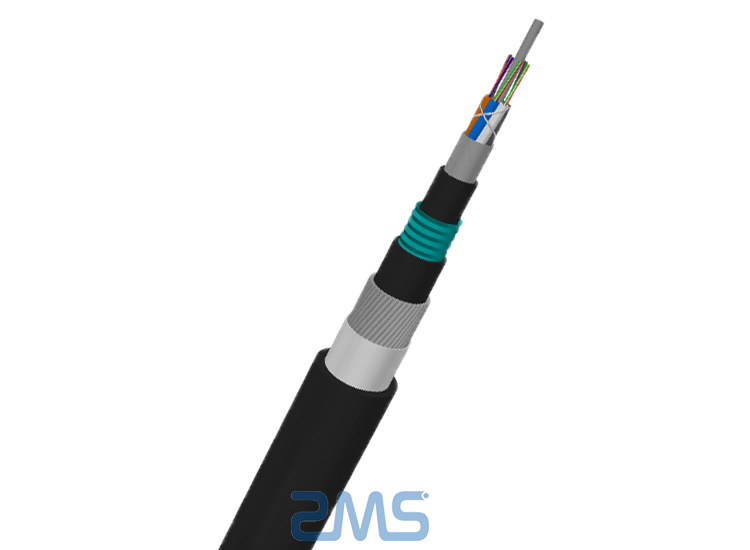
GYTA33 Series Submarine Fiber Optic Cable
Compared with terrestrial fiber optic cable, deep sea fiber optic cable consists of many superior features.
1. Laying does not need to dig a trench or support with brackets, thus less investment and faster construction.
2. In addition to the landing lot, most of the underwater fiber-optic cables at a certain depth of the sea floor, are not subject to wind and waves and other natural environmental damage and human production activities interference.
Therefore, the cable is safe and stable, with strong anti-interference ability and good confidentiality performance.
Fiber count | 2~30 | 32~36 | 38~60 | 62~72 | 2~36 | 38~72 | |
CSM/Steel wire (mm) | –/1.5 | –/2.0 | –/1.8 | 2.4/1.8 | –/2.0 | 2.4/1.8 | |
Element mumber | 5 | 6 | 5 | 6 | 6 | 6 | |
Max. cores in tube | 6 | 6 | 12 | 12 | 6 | 12 | |
Diameter of inner sheath | 8.3 | 8.8 | 9.1 | 9.7 | 10.5 | 10.5 | |
Steel wire diameter and No. | Φ1.0/28 | Φ1.0/29 | Φ1.0/30 | Φ1.0/32 | Φ1.5/24 | Φ1.5/24 | |
Cable diameter approx (mm) | 14.3 | 14.8 | 15.1 | 15.7 | 17.5 | 17.5 | |
Weight approx (kg/km) | 315 | 328 | 0.34 | 360 | 520 | 520 | |
Tensile strength (N) | Long term | 4000 | 10000 | ||||
Short term | 10000 | 2000 | |||||
Crush Resistence(N/100mm) | Long term | 3000 | |||||
Short term | 5000 | ||||||
Bending Radius (mm) | Dynamic | ≥30 ×Dia. Of cable | |||||
Static | ≥15×Dia. Of cable | ||||||
Operating Temperature (°C) | -40°C ~+ 70°C | ||||||
Application | Directly burial and Under water | ||||||
Key Characteristics Of Submarine Optical Fiber Cables
Lightweight submarine fiber optic cable (LW) is the core of other types of submarine cables in the same series. The center is a stainless steel tube structure, the outer layer is supplemented by inner armor steel wire and polyethylene layer and other protective layers, suitable for the area within 8000m water depth
Lightweight protection submarine cable (LWP) is the LW cable with a metal band and polyethylene sheath, suitable for areas up to 7000m water depth. It has the characteristics of abrasion resistance and resistance to tearing by marine animals.
Single-layer armored subsea cable (SA) is a single layer of armored steel wire outside the LW cable, suitable for buried areas within 2000m water depth, to prevent tugboat hazards
Double armored undersea cable (DA) adds another layer of armored steel wire outside the SA cable, which is suitable for burial areas with high tug hazards and high abrasion environment within 600m water depth.
Fiber optic cables in ocean systems are mainly used to connect fiber optic cable and the Internet, it consists of two major parts: onshore equipment and underwater equipment. The submarine cable is the most important and vulnerable part of the underwater equipment. The onshore equipment packages the communication services such as voice, image, and data for transmission. Underwater equipment is responsible for the processing, sending, and receiving of communication signals. Underwater equipment is divided into three parts: submarine fiber optic cable, repeater, and “branch unit”: submarine fiber optic cable is the most important and fragile part of it.
1. submarine fiber optic cable is wrapped with an insulating sheath of wire bundles laid on the seabed, seawater can prevent interference from external light and magnetic waves, so the signal-to-noise ratio of the submarine cable is high.
2. submarine fiber optic cable communication in the time delay can not be felt.
3. The design life of submarine fiber optic cable is 25 years of continuous operation, while artificial satellites generally run out of fuel in 10 to 15 years.
Technical Principle Of Submarine Cable System
The network of countries in the world can be seen as a large local area network. Submarine fiber optic cable and land fiber optic cable connecting them to the internet. The fiber optic cable is the core of the Internet, and the US is almost the core brain of the Internet. As the birthplace of the internet, the United States houses many servers, and 10 of the 13 root servers that connect domain names worldwide are in the United States. When you log in to most websites or send emails, the data almost always have to go around the US to reach its destination. The submarine cable is zoned for maintenance, and for security purposes, it usually needs to be maintained. If someone fished out the submarine cable and added it to the fiber, they could steal the information.
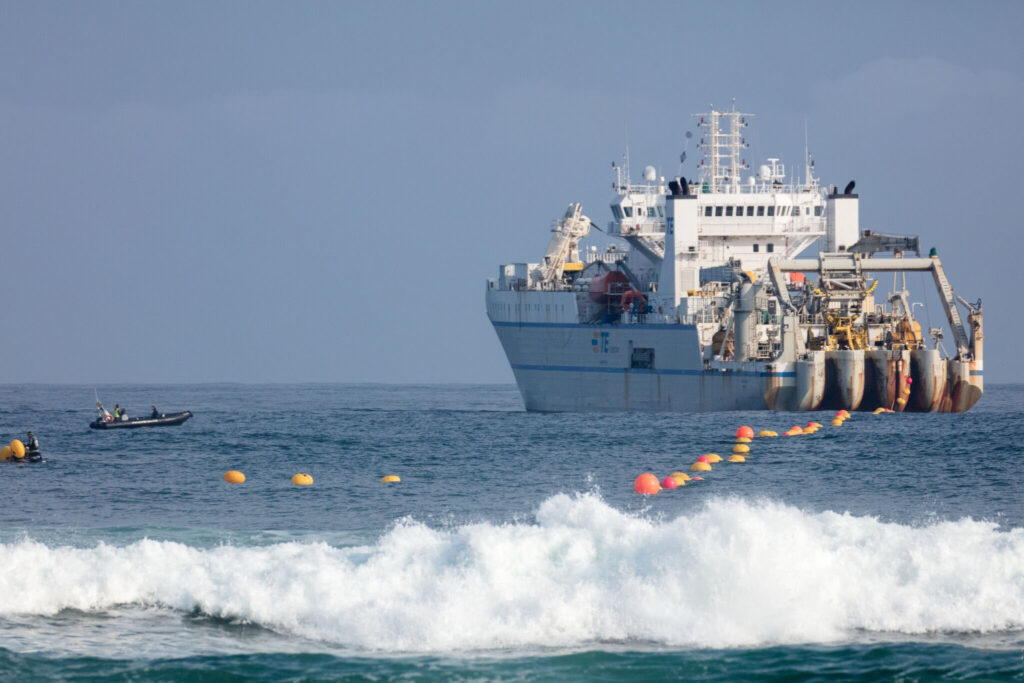
If there is a war, someone could also destroy the fiber optic cable. The submarine cable is the best communication solution, other methods such as satellite and microwave can be supplemented, but cannot replace the submarine cable for the time being because they have limited channels. It is a way that can allow a wide range of users to communicate inexpensively.
The remote power supply of the submarine cable system is essential, and the repeaters along the submarine cable depend on the landing office for remote power work. Digital repeaters for submarine fiber optic cables are multi-functional and use several times more power than analog repeaters for submarine cables. The power supply requires a high degree of reliability and cannot be interrupted. Therefore, in shark-infested areas, two layers of steel tape wrapping and another layer of polyethylene outer sheath are added to the outside of the submarine cable. Even with such tight protection, the polyethylene insulator of the deep-sea cable was found to be damaged by shark bites in the late 1980s, causing power supply failures.
Prospects Of ZMS Submarine Cables
The complexity of the marine environment of the submarine cable project put forward high requirements, underwater cable engineering is a recognized problem in the world, construction difficulties, high maintenance costs. And it was only a few companies in the world have the ability to lay and commission submarine high-voltage cable. The development of the submarine cable market has been greatly restricted. More issues, but more solutions to the problem. In the future, the application space of submarine cable will be broader, it is important infrastructure equipment, and is an important technical support for human beings to achieve the effective expansion of their own activity area. It transports clean ocean energy to the mainland, relieving the tension of mainland resources, and also transports mainland energy to the ocean, contributing to the development of the ocean economy.
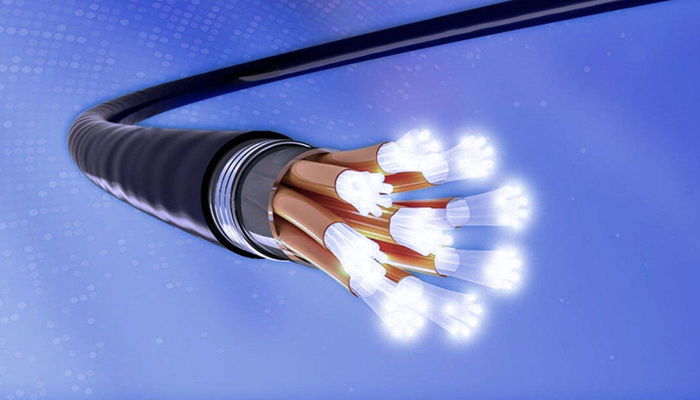
ZMS Submarine Cable company firmly believes in this. Therefore, we strictly require ourselves. Managed with high-quality products and after-sales service, ZMS cable has a strong technical force, exquisite technology, advanced production equipment, complete testing means, and advanced enterprise management.
The submarine cable products produced by the ZMS cable factory include submarine power cables, submarine communication cables, submarine fiber optic cables, underwater cables, Internet cables in the ocean, and other products. A variety of new products have been researched and independently judged, taking into account the comprehensive factors of equipment, materials, yield, conversion efficiency, quality and cost, and the need to master the right timing for production. For the mainstream technology direction, the company has reserved for mass production and will launch differentiated products according to the characteristics of different markets.
In recent years, through independent research and development, the company has been breaking through the length and voltage level of underwater cable production and taking the lead in the development of dynamic submarine cable, towing cable, and other special submarine cables. The production of submarine cable-related products are widely used in marine scientific research and resource development and other fields, to provide assistance to the construction of China’s “Ocean Power” strategy.







